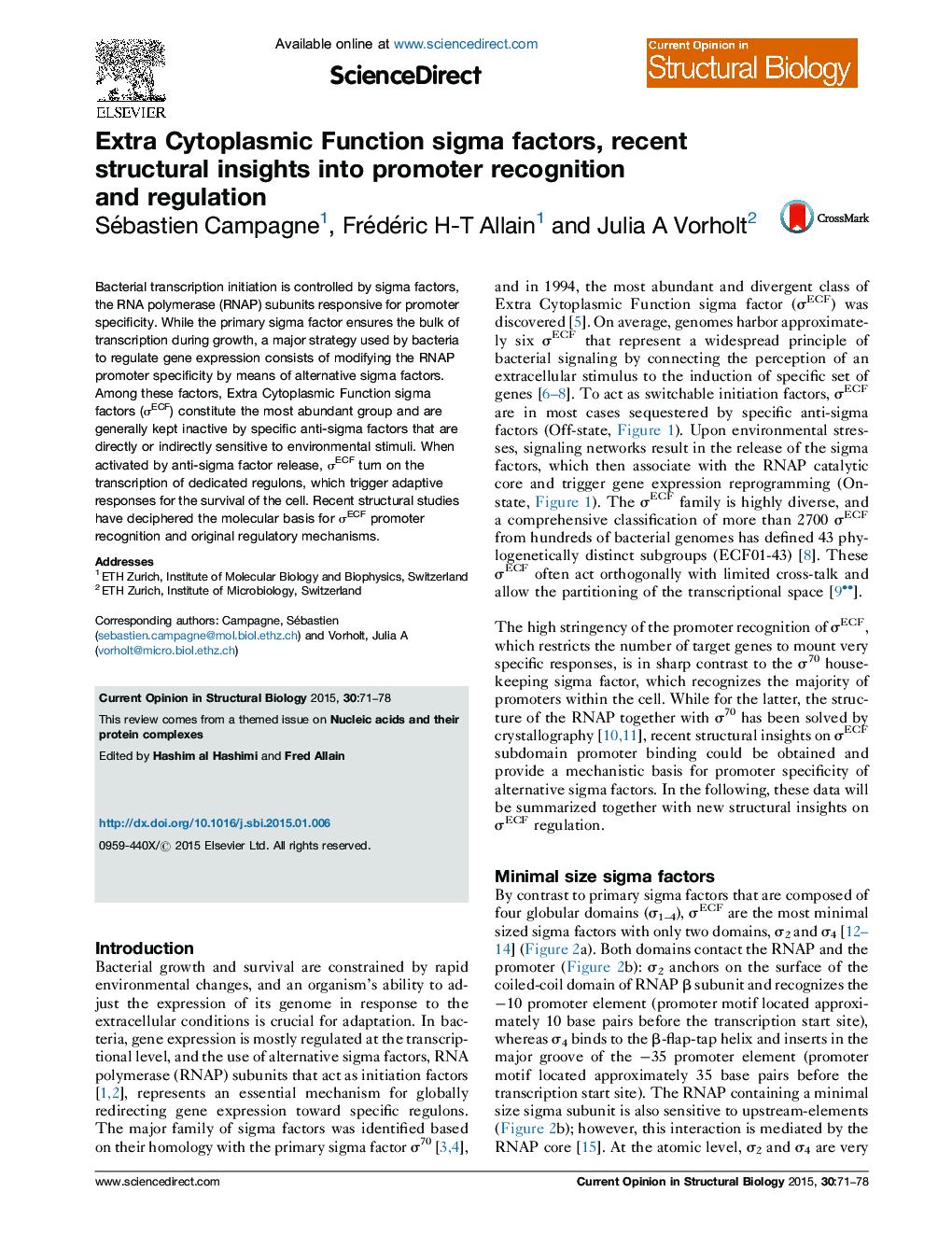| Article ID | Journal | Published Year | Pages | File Type |
|---|---|---|---|---|
| 8320009 | Current Opinion in Structural Biology | 2015 | 8 Pages |
Abstract
Bacterial transcription initiation is controlled by sigma factors, the RNA polymerase (RNAP) subunits responsive for promoter specificity. While the primary sigma factor ensures the bulk of transcription during growth, a major strategy used by bacteria to regulate gene expression consists of modifying the RNAP promoter specificity by means of alternative sigma factors. Among these factors, Extra Cytoplasmic Function sigma factors (ÏECF) constitute the most abundant group and are generally kept inactive by specific anti-sigma factors that are directly or indirectly sensitive to environmental stimuli. When activated by anti-sigma factor release, ÏECF turn on the transcription of dedicated regulons, which trigger adaptive responses for the survival of the cell. Recent structural studies have deciphered the molecular basis for ÏECF promoter recognition and original regulatory mechanisms.
Related Topics
Life Sciences
Biochemistry, Genetics and Molecular Biology
Biochemistry
Authors
Sébastien Campagne, Frédéric H-T Allain, Julia A Vorholt,
